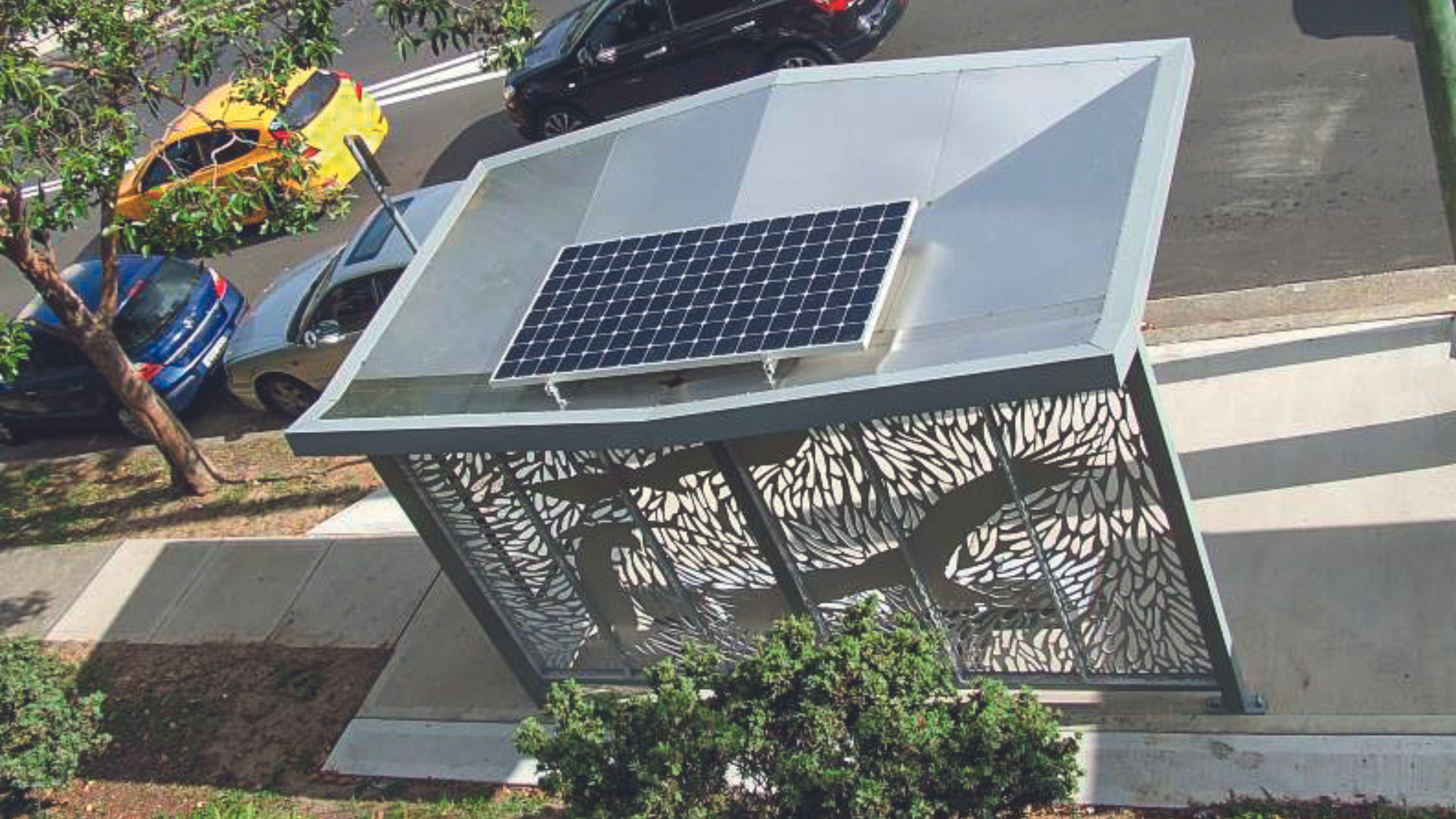Tuesday, 16 August 2022, just after 6 pm. Following a heatwave that lasted several weeks, the equivalent of two to three weeks’ rain fell on Paris in the space of a few minutes. Thousands of properties were flooded and several stations on five different metro lines had to be closed.
Elsewhere in the world, torrential rain that begin in June triggered catastrophic flooding in Pakistan, submerging one-third of the country, while people in California and other parts of the US West sweltered under a heat dome, with temperatures above 45°C for over a fortnight.
Climate change has become a real problem for thousands of cities worldwide — with immediate and tangible consequences for millions of people as they go about their everyday travel. Faced with frequent breakdowns and sometimes significant material damage, network operators have struggled to maintain service continuity. To reduce the cost of these climate-related incidents, which will undoubtedly occur more frequently in the future, public transport authorities are seeking simple but effective solutions to strengthen their networks’ resilience and allow them to cope with severe weather conditions.
Helicopters drop water on a wildfire in Castaic, California.
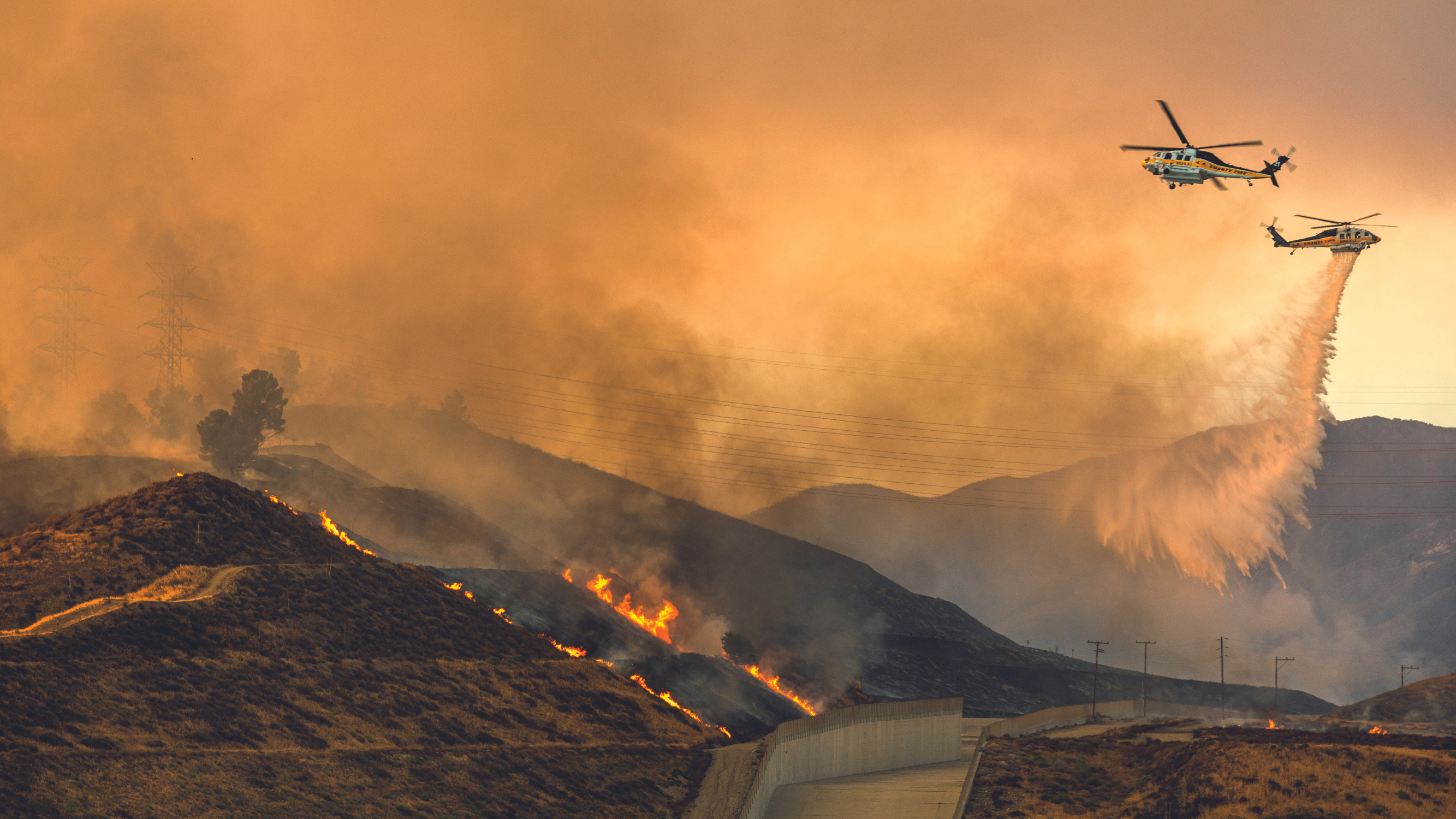
In 2012, New York City was devastated by Superstorm Sandy, flooding streets and subway lines. In 2021, the city was hit again, this time by Hurricane Ida, with flash flooding bringing life to a standstill and wreaking havoc on the underground subway system. In both cases, the cost of the damage was colossal, totalling $50 billion, including repairs to public transport networks. To better prepare for severe weather events, the Metropolitan Transportation Authority (MTA) has deployed the “Flex-Gate” flood barrier system developed by Delaware-based manufacturer ILC Dover.
Made with Kevlar and housed at street level above the stairwells that lead down to stations, the floodgates can be deployed ahead of flood events to create a kind of lid over the openings. Capable of withstanding thousands of pounds of tension, the tarp-like sheets can be rolled out using a simple crank, turning the entrance into a waterproof seal. So far, the system has been installed at 68 New York City subway stations, at a cost of $2.6 billion. Compared with $50 billion worth of damage, that certainly sounds like a wise investment!
Flexible, water resistant flood barriers on an entrance to the New York subway.
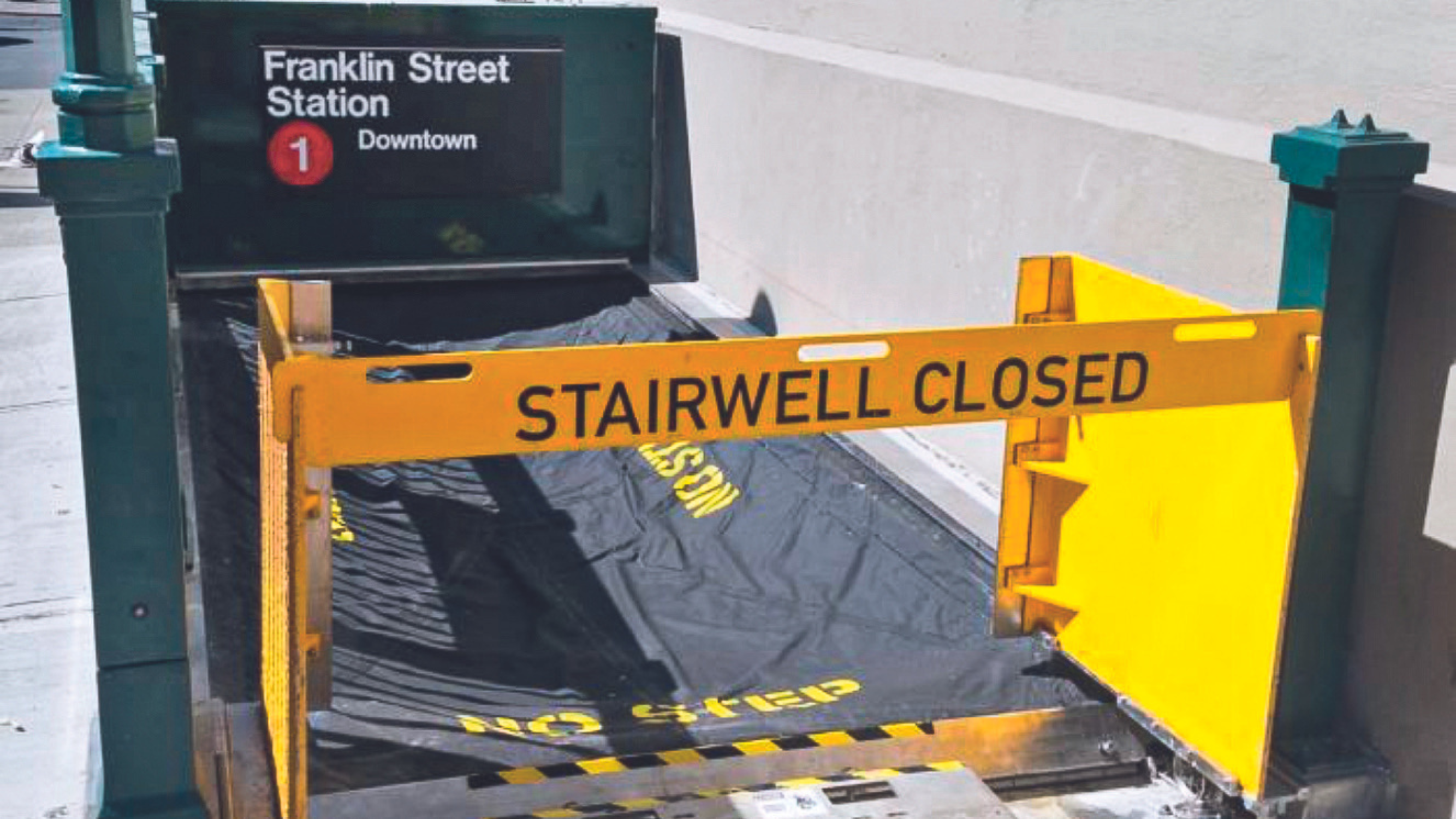
As well as flooding, cities have had to bear the brunt of periods of intense heat, engendering drought, wildfires and even megafires. Local authorities are implementing various solutions to offset the impact of soaring temperatures, which can bring their transport systems to a halt. In Paris, for example, the new T9 tram line operated by Keolis is laid with soft green track beds to absorb heat. Developed by Ecovégétal, the turf is made from four varieties of local plants that are hardier and require less watering and fertiliser than conventional grass. Not only does the vegetation look good, it also significantly reduces noise, requires 70 to 90% less water for irrigation than conventional surfaces, and absorbs heat, helping to mitigate the ‘urban heat island’ effect, thereby providing an enhanced experience for passengers and residents alike.
Soft green track beds along the new T9 tram line in Paris.
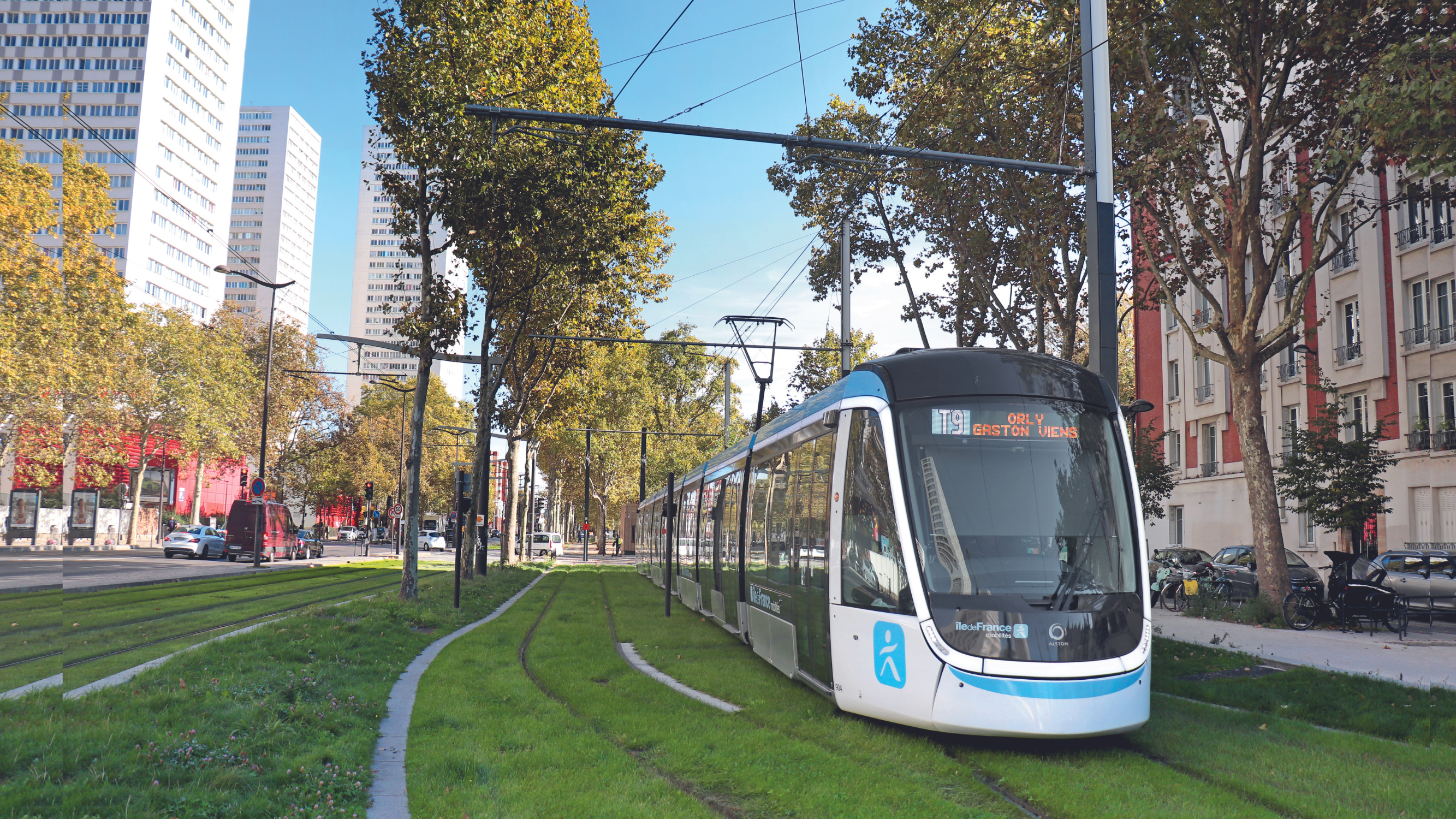
In the UK and Belgium, at the height of the summer heatwave, the railway network owner and infrastructure manager painted sections of track with white paint to prevent rails from buckling and misaligning. This simple but effective solution can bring the track’s temperature down by 5°C to 10°C – in the same way that painting buildings white helps reflect sunlight and make them cooler
Rails painted white during the 2022 heatwave, Liège, Belgium.
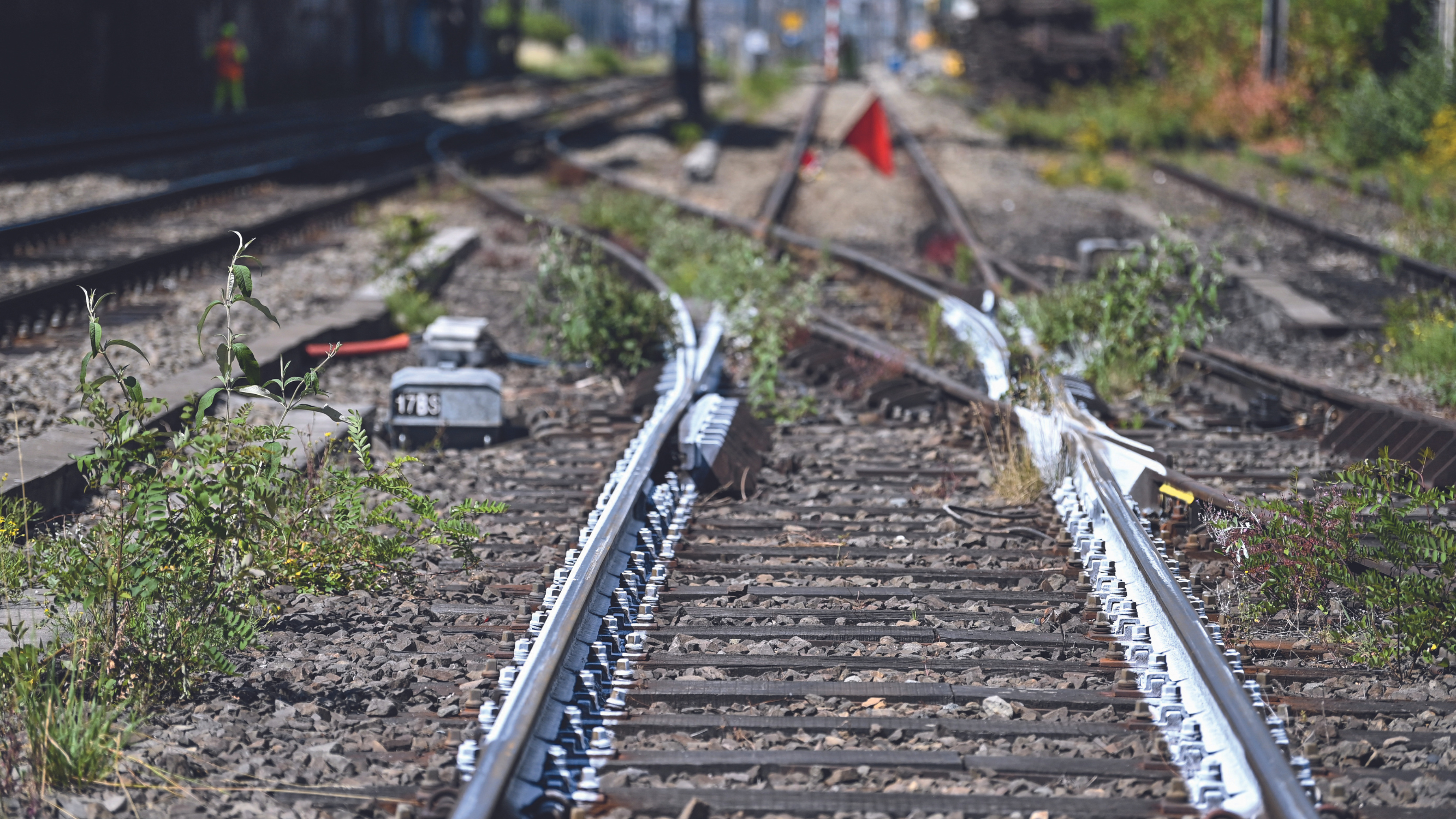
In Australia, Western Sydney is projected to experience up to 7 additional days above 35°C per year by 2030. For the 600,000 passengers who use the city’s buses every day, this could be a major issue. To help beat the heat, a smart, climate-adapted solution has been developed collaboratively through a partnership of Australian research institutes. Dubbed Climate Adapted People Shelters (CAPS), the new bus shelters are made of insulated aluminium to minimise the absorption of heat and feature solar powered LED lighting for safety. Readings have shown that the roof surface temperature on the new shelters is up to 15°C lower than the ambient temperature — making waiting for the bus a much more pleasant experience.
Whether it’s to offset heatwaves, cold snaps, floods, droughts or other consequences of climate change, strengthening the resilience of public transport systems is now high on the agenda for PTAs everywhere. Part of the solution lies in better anticipating and factoring in this new reality, either right from the design stage or as part of transport infrastructure upgrades. Many authorities have already started adapting their cities to alleviate the huge costs likely to be incurred due to damage caused by future extreme weather events. Adapt or bear the consequences — either way, everyone must take action.
Australia tests climate-resilient bus shelters, 2021.
